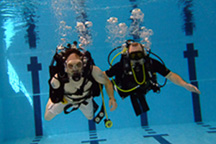Sports Diver Course
- Details
- Category: Training
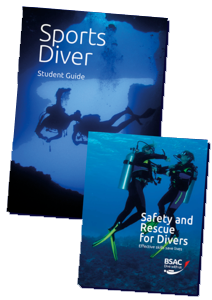
The Sports Diver Course will take a diver who has previously gained their first diver qualification, or Advanced Ocean Diver qualification and help make you a more confident and capable diver.
This course is therefore aimed at those who have completed their entry-level diver qualification with any agency, not just BSAC. For those who have completed the Advanced Ocean Diver course, credit is given to those parts previously taught. Where a student has previously been taught certain skills with other agencies, those lessons may be streamlined.
The course builds upon the rescue skills taught in the Ocean Diver course, along with Nitrox[1], navigation skills and dive equipment. Once qualified, the Sports Diver may also do depth progression dives, ultimately to 35m and start doing dives that require mandatory Decompression stops.
If you would like to speak to our Training Officer about starting this course, please speak to them on a club night or send them an email: This email address is being protected from spambots. You need JavaScript enabled to view it.
You can read more about this course on the BSAC Website.
Next page (Course Content)... ![]()
![]() Return to the Training page...
Return to the Training page...
[1] Nitrox is a breathing gas containing more than 21% oxygen which is known to be beneficial in reducing the risk and symptoms of decompression illness.
Advanced Ocean Diver Course
- Details
- Category: Training
![]() The Advanced Ocean Diver Course (AOD) is a new and exciting addition to the list of Diver courses that we can offer as a BSAC club. It fits neatly between the Ocean Diver and Sports Diver grades and uses some of the existing Sports Diver course content.
The Advanced Ocean Diver Course (AOD) is a new and exciting addition to the list of Diver courses that we can offer as a BSAC club. It fits neatly between the Ocean Diver and Sports Diver grades and uses some of the existing Sports Diver course content.
The course is aimed at anyone who has completed their initial diver qualification (i.e. Ocean Diver, Openwater Diver).
![]() The course comprises four theory lessons which can be completed either online or at the clubhouse; a refresher dive (optional); four or five (one can be combined) qualifying open water dives (including two “depth progression” dives).
The course comprises four theory lessons which can be completed either online or at the clubhouse; a refresher dive (optional); four or five (one can be combined) qualifying open water dives (including two “depth progression” dives).
Upon completion, the qualified AOD may continue to dive to 20m with any qualified diver, but for dives where the depth is between 20m and 30m, they must dive with someone who is a qualified Sports Diver, equivalent or above.
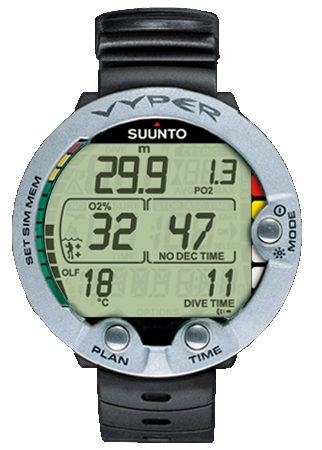
The AOD is still restricted to dives where mandatory decompression stops are not required. This is known as the “No Decompression Limit” or “NDL”. A qualified AOD may dive using Nitrox[1] tables or a dive computer set to Nitrox mode. By using Nitrox, a diver can improve their diving ability with a combination of safety, extended NDL times for both the first and any additional dives and less exhaustion after a dive.
In addition, the AOD course includes the lessons on using a surface marker buoy (SMB) and delayed SMB (dSMB). As most of our club members regularly dive with at least one dSMB, this is quite an important addition for the kind of diving you may undertake as a club member.
If you would like to speak to our Training Officer about starting this course, please speak to them on a club night or send them an email: This email address is being protected from spambots. You need JavaScript enabled to view it.
You can read more about this course on the BSAC Website.
Next page (Course Content)... ![]()
![]() Return to the Training page...
Return to the Training page...
[1] Nitrox is a breathing gas containing more than 21% oxygen which is known to be beneficial in reducing the risk and symptoms of decompression illness.
Advanced Ocean Diver Course Content
- Details
- Category: Training
Page contents
- Prerequisites
- Qualification: What that means
- Required gear
- Recommended gear
- Course Structure
- Course Costs
Prerequisites
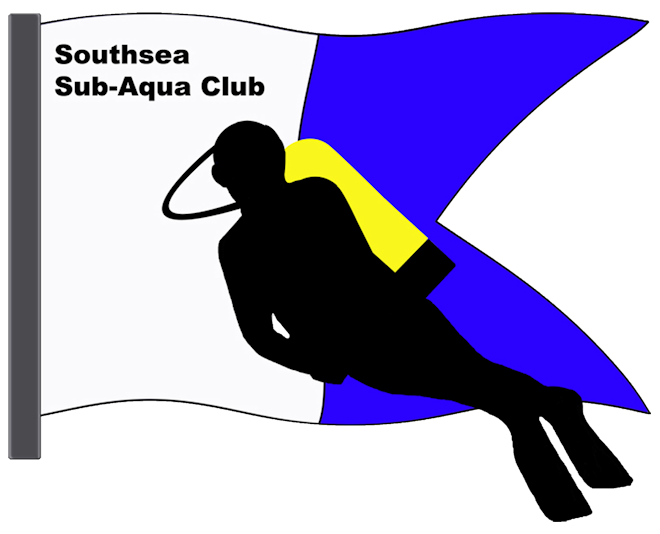 To enrol on the BSAC Advanced Ocean Diver course with Southsea Sub-Aqua Club, you must be 14 years or older, be a current full diving member of both the BSAC and Southsea Sub-Aqua Club and be considered "fit to dive"[1] and have competed the Ocean Diver course or equivalent.
To enrol on the BSAC Advanced Ocean Diver course with Southsea Sub-Aqua Club, you must be 14 years or older, be a current full diving member of both the BSAC and Southsea Sub-Aqua Club and be considered "fit to dive"[1] and have competed the Ocean Diver course or equivalent.
Note: the BSAC Ocean Diver course includes the initial training for Nitrox. If you are coming from a different training agency and do not have a Nitrox qualification, we can offer a short workshop to provide this qualification.
Typically we would be looking for a qualified diver to have most of their dive gear, but understand that this will not always be the case. With this in mind, the club does have some equipment that can be hired at a reasonable rate. This includes dSMBs and reels. We don’t have diving suits available for hire, so you should have a suitable dive suit (i.e. Drysuit or wetsuit). We can offer the additional Drysuit Diver workshop if required.
Qualification: What that means
A BSAC Advanced Ocean Diver is defined as a diver who is competent to conduct dives:
- To a maximum depth of 20m, with any qualified Ocean Diver or better, within the restrictions of the conditions already encountered during training, under the supervision of a Dive Manager
- To a maximum depth of 30m with a qualified Sports Diver or better, within the restrictions of the conditions already encountered during training, under the supervision of a Dive Manager
- With a Dive Leader or higher grade, to expand experience beyond the conditions encountered during training, under the supervision of a Dive Manager
- Not requiring mandatory decompression stops
- Under the on-site supervision of a Dive Manager with respect to site selection, conditions and dive plan
- Using Nitrox[2]as part of your diving within no-decompression limits, using either the BSAC 88 Nitrox Tables or a Dive Computer set to Nitrox mode
Required Gear
Whilst someone may have just passed their initial Scuba diver course, it would be expected that the student would now be acquiring their own Scuba gear. Some items may be available to hire from the club, but in time most club members will have built upon the basics they had purchased during their initial course.
Full Scuba gear, including: mask; fins; snorkel; buoyancy compensator; regulator set (equipped with a main demand valve, alternative supply demand valve and contents gauge); depth gauge & timer/watch or diving computer; diving suit, weights and weight belt/integrated weight system; knife or line cutter; copy of the BSAC 88 Nitrox Tables or Dive Computer; a torch & backup; and a suitable diving cylinder for the planned dives (i.e. 12 or 15 litres) or two.
A dSMB and reel and a compass are also required for the course. If the student doesn’t have these, it may be possible to hire them from the club at a reasonable rate. This should be discussed prior to training.
Recommended Gear
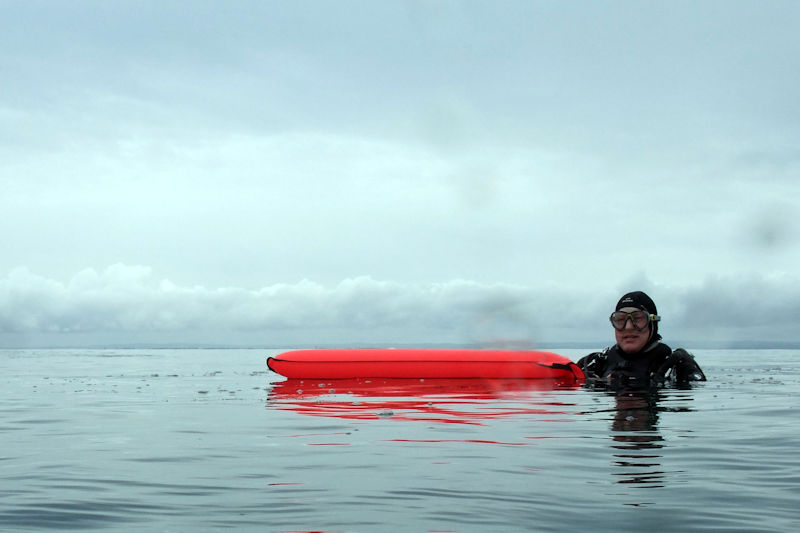
To allow members to dive all year round, most club members use a Drysuit, but a few do wear semi-dry or wetsuits during the summer months. If you have not completed suitable training for the Drysuit, we can offer a Drysuit Workshop which consists of a couple of lectures and an open water session.
Almost all members dive with a Dive computer and one that supports Nitrox would definitely be a better choice. Whilst all new Dive Computers support Nitrox, it is possible to purchase Air only dive computers from second-hand sources.
Gloves and a suitable hood are also good to keep the diver warm in UK waters. Many would consider these essential. A knife or line cutter would be an essential part of any UK diver’s gear. Add to this a reel and dSMB and compass too.
If you are unsure about what would be best for you, please feel free to chat with one of our Instructors on a club night.
Course Structure
The Advanced Ocean Diver (AOD) course comprises the following elements:
- Four Lectures can be completed either online, using the BSAC e-learning facilities, or with one of our instructors at the clubhouse who can provide the lectures in person
- The option of a refresher open water dive, aimed at those who have had a break from diving before starting this course. This is also an opportunity to ensure that the student is correctly weighted
- Three or two open water dives where the following skills are taught:
- Surface Marker Buoy (SMB)
- Delayed Surface Marker Buoy (dSMB)
- Compass
The lesson using the compass can be combined with one of the dives where the SMB or dSMB is taught
- Theory test with a pass mark of 80%
- Two Depth Progression dives to 25m and 30m, respectively
For all the open water dives, the student should demonstrate control of their buoyancy to within 1m of the required depth.
Course Costs
The course costs comprise of the following elements and will vary over time. For a better understanding of the current estimated costs, please speak with one of our instructors:
- AOD Student Pack (available either as an electronic pack (e-Pack) or as a hard copy
- Open water dives
- Transport to/from the dive site
- Entry to the dive site or Cost of diving from a dive boat
- Instructor “out of pocket” costs
- Transport to/from the dive site
- Entry to the dive site or Cost of diving from a dive boat
At the time of writing, the e-Learning pack is £20. For the current prices for the AOD packs, please check with the Training Officer.
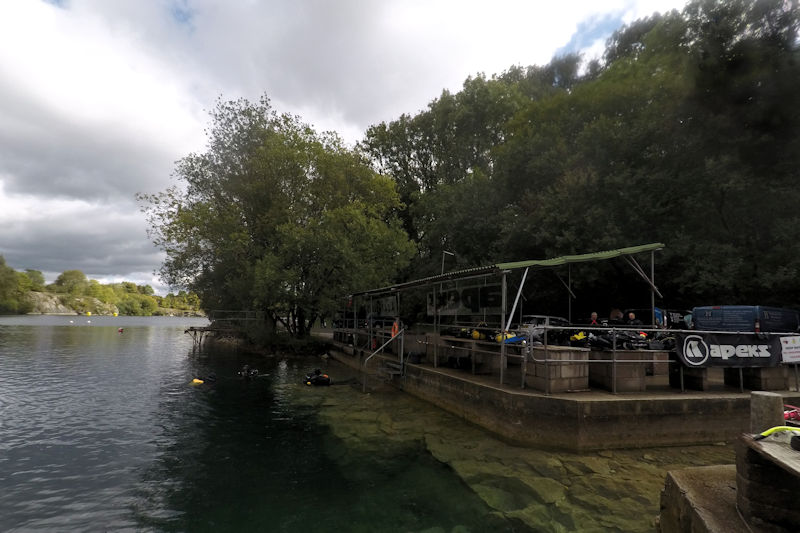
By way of an example, at the time of writing (February 2022), the entry fee to Vobster Quay, an inland dive site we often use, is £23 for non-members and £17 for members. Vobster Quay is around 85 miles and about a 2 hour trip from the Clubhouse. Diving from the Club’s RIB in the Selsey area would be about £20-£30 per dive. Selsey’s public slipway is 22 miles or 30 minutes from the clubhouse. There is a daily parking charge of £1.70 (East Beach, Selsey - correct as of February 2022).
Depending on the weather, Instructor availability and how well someone does, the open water dives could be completed over two days, with the depth progression dives completed on the third day.
Dependent upon the diving conditions, the lessons may be taught with one or two students. In some cases, this may be increased up to 6 students per instructor. For safety, it would be anticipated that one-to-one would be more likely, with some cases of two-to-one.
If you would like to speak to our Training Officer about starting this course, please speak to them on a club night or send them an email: This email address is being protected from spambots. You need JavaScript enabled to view it.
You can read more about this course on the BSAC Website.
![]() Back to Advanced Ocean Diver Course introduction...
Back to Advanced Ocean Diver Course introduction...
![]() Return to the Training page...
Return to the Training page...
[1] "Fit to dive" is assumed on the basis of a completed Self Certification Medical Form or a Certificate to Dive issued by an approved Medical Referee.
[2] Nitrox is a breathing gas containing more than 21% oxygen which is known to be beneficial in reducing the risk and symptoms of decompression illness. BSAC includes up to Nitrox 36 (36% oxygen) within their diver qualifications. For richer mixes, there are additional Skill Development Courses, such as ADP.
BSAC Advanced Ocean Diver
- Details
- Category: Training News
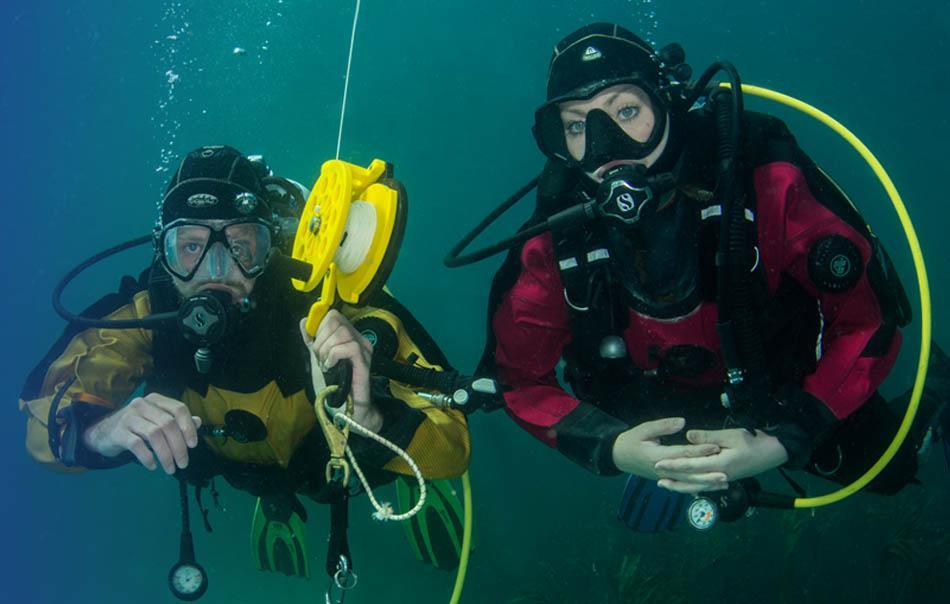 This month, February 2022, BSAC has launched a new diver qualification grade, Advanced Ocean Diver.
This month, February 2022, BSAC has launched a new diver qualification grade, Advanced Ocean Diver.
This new course sits neatly between the Ocean Diver and Sports Diver qualifications and takes some of the lectures and practical sessions from the Sports Diver course.
The result is a diver who can potentially dive on more club dives which are a little more adventurous to greater depths than the Ocean Diver, and someone who can make better use of Nitrox and a diving gas.
The course includes 4 lectures, a theory test, an optional refresher dive and three open water lessons, of which one can be combined into one of the other two. Upon completion of these, the diver can progress with two Depth Progression dives to 25m and then 30m.
For dives where the depth is deeper than 20m, the qualified Advanced Ocean Diver should be buddied with someone who is a qualified Sports Dive, equivalent or above.
For those who complete this course, they don’t have to repeat the lessons which match in the Sports Diver course.
For details of this course, please see the BSAC Website
About the Ocean Diver Course
- Details
- Category: Training
Contents
Ocean Diver Course Introduction ![]()
About the Ocean Diver Course (this page)
- Prerequisites
- What You'll Learn
- Qualification: What That Means
- Learning Materials for e-learning element
- Required Gear
- Recommended Gear
- Welfare & Safeguarding
If you would like to speak to our Training Officer about starting this course, please speak with them at the clubhouse of a club night or send them an email: This email address is being protected from spambots. You need JavaScript enabled to view it.
To enrol on the BSAC Ocean Diver course with Southsea Sub-Aqua Club, you must be 12 years or older and be considered "fit to dive"[1]. A basic level of comfort in the water is important and you will have to demonstrate that you can swim 200m in swimwear.
The BSAC Ocean Diver course has three main stages:
- On line course, learning at your own pace, including theory assessments on the basic principles of scuba diving. This element is payable directly to BSAC
- Minimum of five confined water lessons to learn the basics in the water (usually in a swimming pool) plus an optional dry suit dive
- Minimum of four open water dives to further develop your scuba diving skills
Qualification: What That Means
A BSAC Ocean Diver is defined as a diver who is competent to conduct dives:
- To a maximum depth of 20m
- With another BSAC Ocean Diver or with a BSAC Sports Diver, within the restrictions of the conditions already encountered during training, under the supervision of a Dive Manager
- With a Dive Leader or higher grade, to expand experience beyond the conditions encountered during training, under the supervision of a Dive Manager
- Not requiring mandatory decompression stops
- Under the on-site supervision of a Dive Manager with respect to site selection, conditions and dive plan
- Using enriched air (Nitrox)[2]as part of your diving within certain constraints
Learning Materials for e-learning element
This is payable directly to BSAC, the cost is not included in the SSAC training package. All the learning materials you need for the BSAC Ocean Diver course which includes
- Downloadable student guide and qualification record page
- Access to the BSAC 'The Diving Manual' for extra reading and knowledge
- BSAC 88 Decompression Tables
- Qualification card upon completion
Each course is taught using a student guide flipbook which consists of text, videos, and PowerPoint presentations with voiceovers.
At the end of each module, there are quizzes that need to be completed and passed. If the student passes each module with four out of five correct answers, the module will be signed off and they will be able to download a theory certificate for that module.
Swimwear and towel. All other equipment will be supplied during your training, except a dry suit or wet suit.
Although the diving equipment is provided, Ocean Diver trainees may wish to buy their own mask and snorkel. You may also wish to use a wet suit or t-shirt for added comfort during the pool lessons.
![]() Previous page (Introduction)...
Previous page (Introduction)...
Next page (Course Content)... ![]()
![]() Return to the Training page...
Return to the Training page...
[1] "Fit to dive" is assumed on the basis of a completed Self Certification Medical Form or a Certificate To Dive issued by an approved Medical Referee.
[2] Nitrox is a breathing gas containing more than 21% oxygen which is known to be beneficial in reducing the risk and symptoms of decompression illness.
Ocean Diver Course Content
- Details
- Category: Training
Contents:
- Prerequisites
- What You'll Learn
- Qualification: What That Means
- Learning Materials for e-learning element
- Required Gear
- Recommended Gear
- Welfare & Safeguarding
Ocean Diver Course Content (this page)
If you would like to speak to our Training Officer about starting this course, please speak with them at the clubhouse of a club night or send them an email: This email address is being protected from spambots. You need JavaScript enabled to view it.
The Ocean Diver Course consists of the following elements:
- e-Learning online lessons covering the following subjects:
- Adapting to the underwater world
- The body and effects of diving
- Going diving
- Dive planning
- What happens if...?
- Enjoying your diving
- Theory assessments contained in the course.
- Two revision lessons to reinforce your learning.
- Five sheltered water lessons (swimming pool), plus an optional additional pool lesson on how to dive in a dry suit. In the pool, you will get the opportunity to learn about how to achieve neutral buoyancy and the key practical skills required to dive. There are also a number of rescue procedures that are taught at this stage. Each student normally takes 5 to 10 pool sessions to successfully learn and demonstrate the skills required to progress to the open water dives.
- Four open water lessons, normally in the sea or a freshwater lake depending on weather conditions. The open water lessons build on diving and rescue skills developed in the swimming pool.
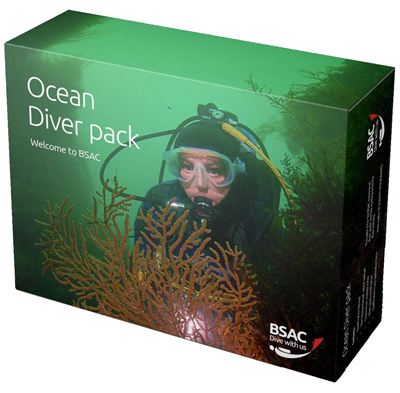
The price of the Ocean Diver course is in three elements:
- BSAC membership
- BSAC e-learning pack
- SSAC course - £450
Items 1 & 2 are payable directly to BSAC.
The SSAC cost includes:
- Pool sessions – qualified instructor, SCUBA equipment, tanks/air, weights, BCD, fins, snorkel and mask during pool sessions. Entry into the pool. Drysuit training (1 sheltered water session)
- Open water sessions – qualified instructor, SCUBA equipment, tanks/air, weights, BCD, fins, snorkel and mask. We will endeavour to supply hood/gloves but cannot guarantee your size will be available
- SSAC joining fee
- Revision lessons to reinforce e-learning
- Use of a dry suit or wet suit for open water dives, these are the student's responsibility
- Cost of transport, entry into diving centres or cost of the boat for open water dives
- Additional open water sessions will be at extra cost
- SSAC membership is additional, based on current rates and payable monthly. Click here to view our current membership fees.
Meeting the Standards for Ocean Diver
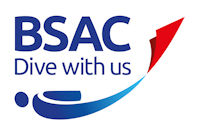
All SSAC instructors have met the standard of instruction required by BSAC. They will do their best to teach you the skills required to pass the course. Every student is different and will be treated accordingly. There is no maximum time set for the student to achieve the skills required to pass the course however instructors will not sign off the particular session or skill unless the student has been able to demonstrate competence in the task. Payment for the course is not a guarantee that the student will pass and qualify as an Ocean Diver.
![]() First page (Introduction)...
First page (Introduction)...
![]() Previous page (About the Ocean Diver Course)...
Previous page (About the Ocean Diver Course)...
![]() Return to the Training page...
Return to the Training page...
Drysuit Workshop Training Day
- Details
- Category: Training News
On an uncharacteristically warm day in late October of 2021, five members of the Southsea Sub Aqua Club ventured to the furthest reaches of Somerset to complete their Drysuit training.
Having already completed their theory session, Nicky, Steve and Dylon arrived at Vobster Quay, perhaps a little apprehensively, ready to dive using a Drysuit for the first time. After a short briefing, the three students started their preparation for their first dive and the watchful eyes of Instructors Robyn Peel and Jim Fuller. Despite the usual unexpected problems(1), we were all soon ready to venture into the sheltered water pen. The students quickly realised that drysuits, unlike, say T-shirts and shorts, considerably restrict your movements.
The first session involved getting weighting correct, and this is completely different to wetsuit weighting as we all know. This important step out of the way we then moved on to the stuck inflator and inversion drills, both on the surface and on the very convenient two-meter platform. Having completed those important skills we moved onto the all-important CBLs, first in the pen, and then from the six-meter platform.
The morning dives completed, we took stock (and tea/coffee and a burger), ready for the afternoon's experience dive. By then the fair and warm weather had given way to duller, and wetter weather. Some of us then enjoyed an hour exploring Vobster, including the top of the crushing works and a very scenic wall dive.
This involved an exploratory experience dive, where we were able to visit some of the attractions that Vobster Quay has to offer. After a bimble around the ledge at twelve meters, taking in the car and plane, we returned to our exit point, a new walkway adjoined to the pergola was our kitting bench and base for the day.
The diving complete, we packed up and set off for the long trek home, battling the traffic off the afternoon rush hour.
Overall a successful day, with three club members now trained and experienced in operating what is often an under-rated piece of active diving equipment, and now ready to dive year-round in the less than tropical South coat.
(1) Oxymoron intended.
Welfare and Safeguarding
- Details
- Category: Training
 The safety and safeguarding of children and vulnerable adults is of primary importance to SSAC. This club is committed to providing an environment where young people can learn and participate in the sport of scuba diving free from harassment and abuse. All club members working with children have a moral and social responsibility to safeguard and promote the welfare and safety of children and vulnerable adults. The club follows the BSAC Safeguarding Policy to promote and protect the welfare and safety of both children and adults. All SSAC instructors who work with young people (under 18) or vulnerable adults have been DBS checked in accordance with the BSAC safeguarding policy.
The safety and safeguarding of children and vulnerable adults is of primary importance to SSAC. This club is committed to providing an environment where young people can learn and participate in the sport of scuba diving free from harassment and abuse. All club members working with children have a moral and social responsibility to safeguard and promote the welfare and safety of children and vulnerable adults. The club follows the BSAC Safeguarding Policy to promote and protect the welfare and safety of both children and adults. All SSAC instructors who work with young people (under 18) or vulnerable adults have been DBS checked in accordance with the BSAC safeguarding policy.
![]() BSAC Child Safe Guarding Policy
BSAC Child Safe Guarding Policy
BSAC Adult Safe Guarding Policy
![]() Should you wish to discuss this, please feel free to speak with one of our instructors. If you have an issue, you should contact Tom Templeton, who is our Safeguarding Officer ( email: welfare at southseasubaqua.org.uk ). The contact details for BSAC head office are in the links above.
Should you wish to discuss this, please feel free to speak with one of our instructors. If you have an issue, you should contact Tom Templeton, who is our Safeguarding Officer ( email: welfare at southseasubaqua.org.uk ). The contact details for BSAC head office are in the links above.
Brune Park Community School Swimming Pool - Location
- Details
- Category: Training News
Brune Park Community School is located off Military Road, Gosport.
Brune Park Community School
Military Road
Gosport
Hampshire
PO12 3BU
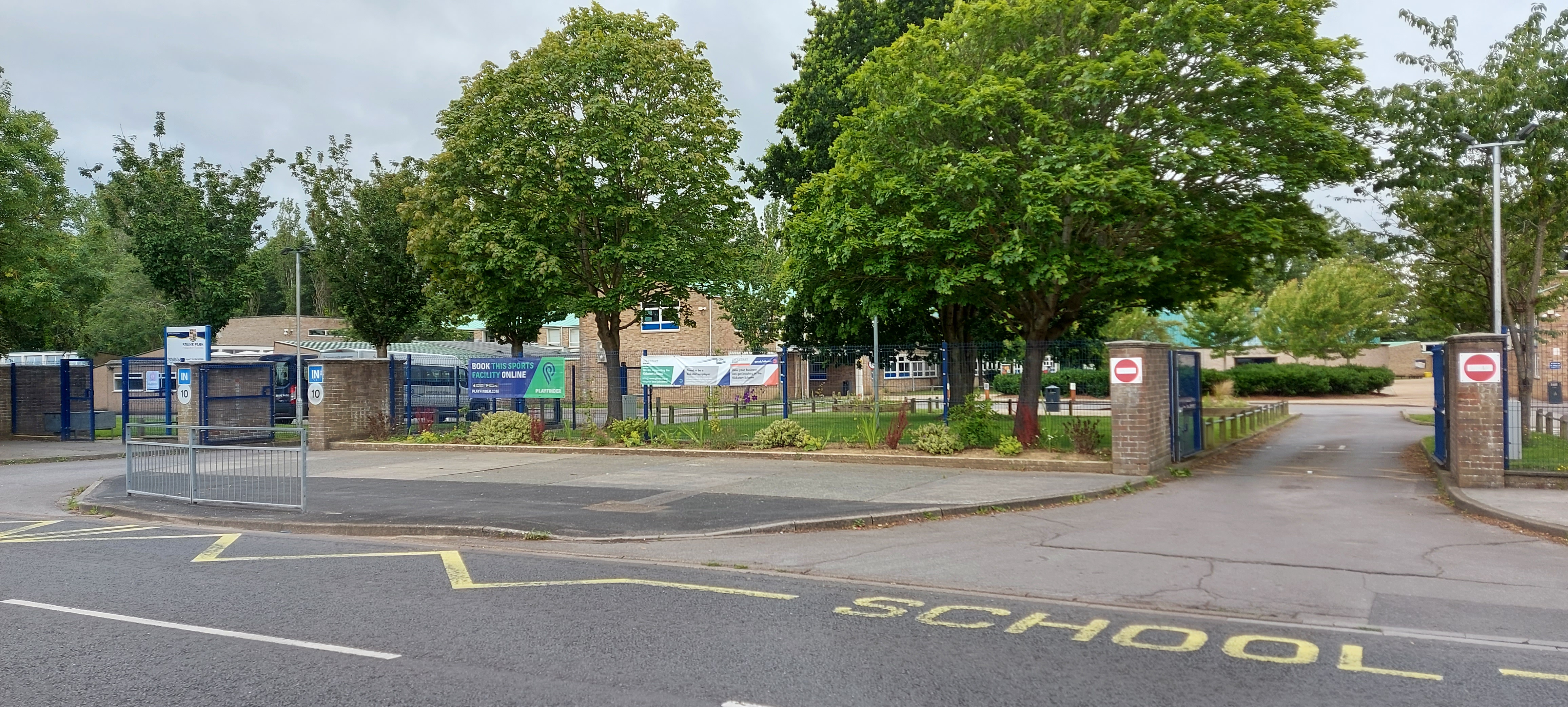
Swimmers & people doing a Try Dive
The building in which the swimming pool is located has a main entrance that is suitable for normal access. The changing rooms are to the right, then down the corridor and on the left, beside the viewing gallery to the swimming pool.
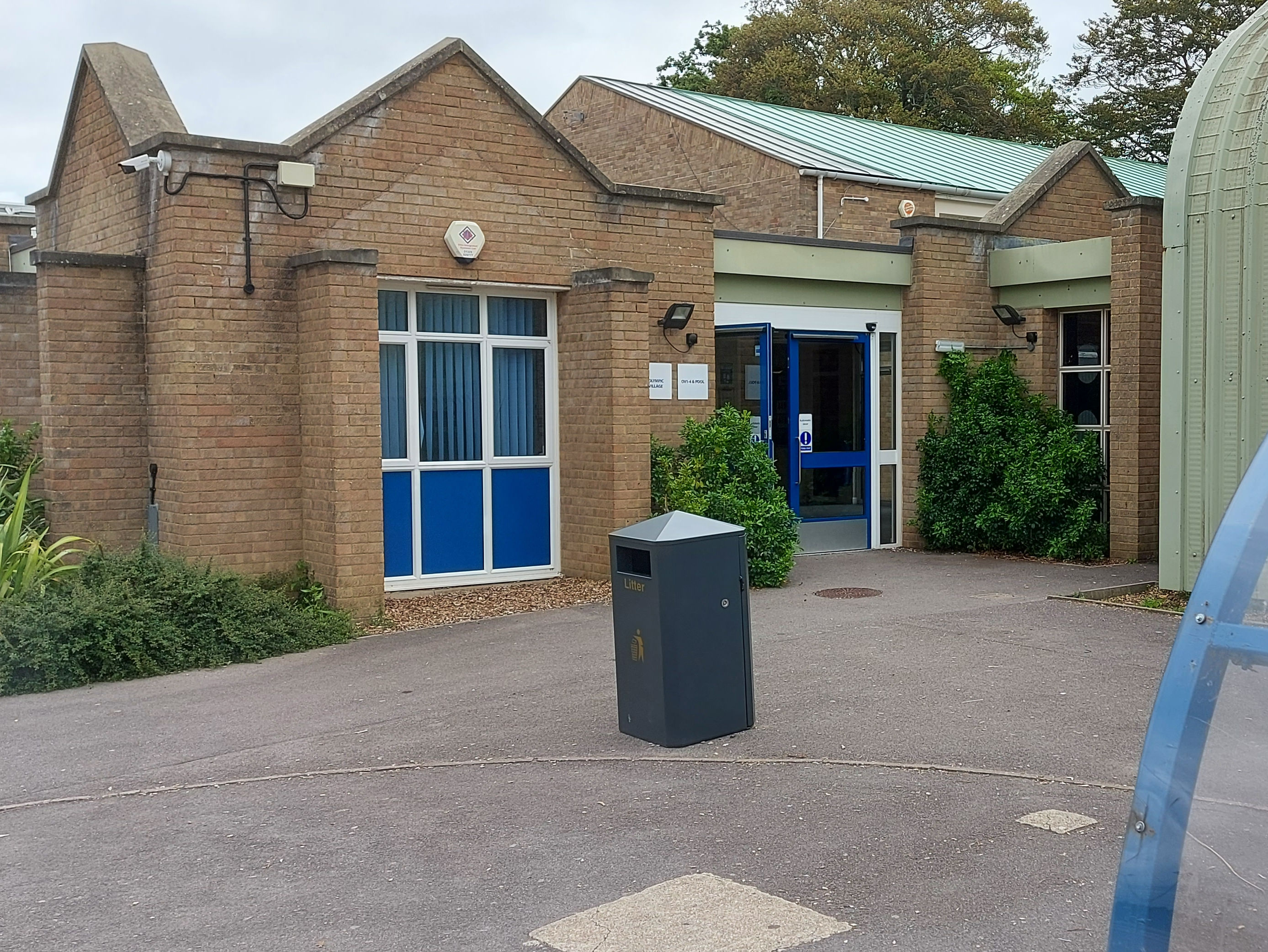
To get to the swimming pool, enter through the main gate and turn right after the island and right again. The entrance to the large car park is here. From here you can walk to the main entrance (see map below).
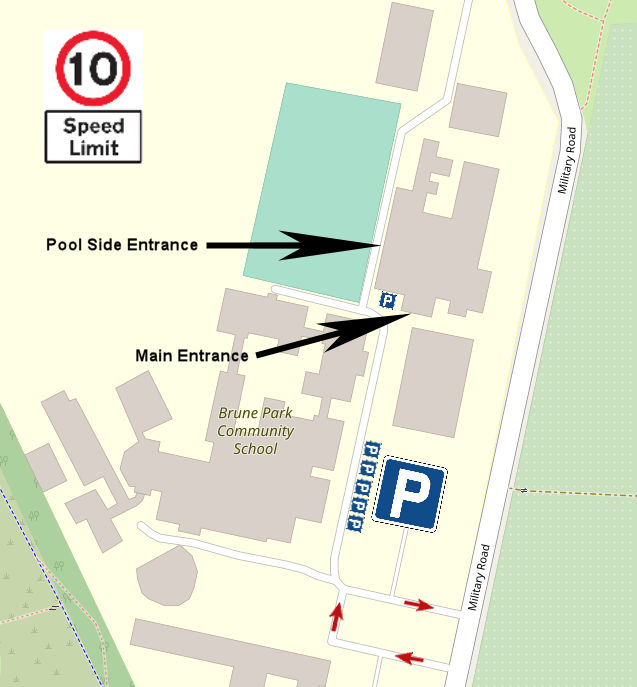
© OpenStreetMap Contributers
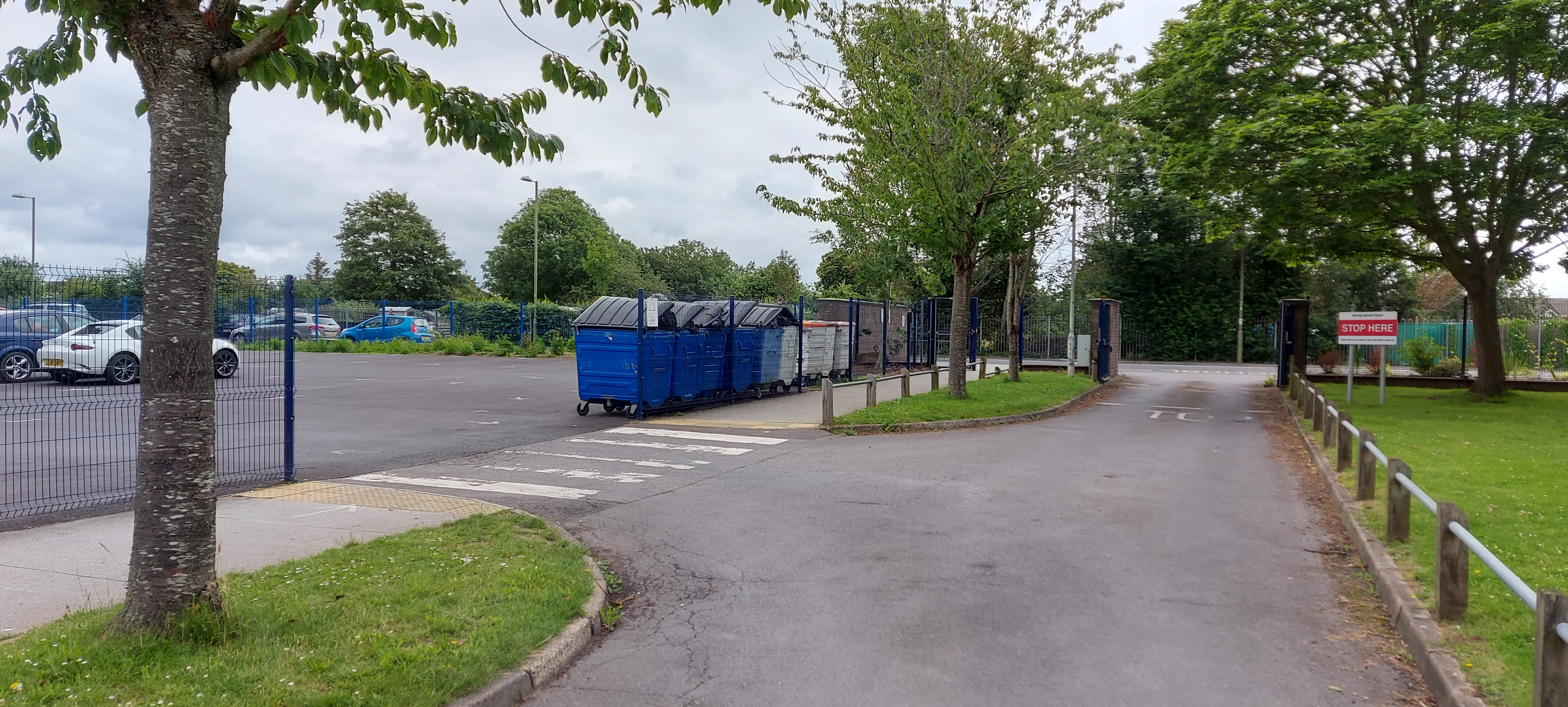
People with Scuba Gear
For those with Scuba gear, we are allowed to use the side entrance, which will be opened in time for us to get it all poolside. Please do not wear outdoor footwear on the poolside.
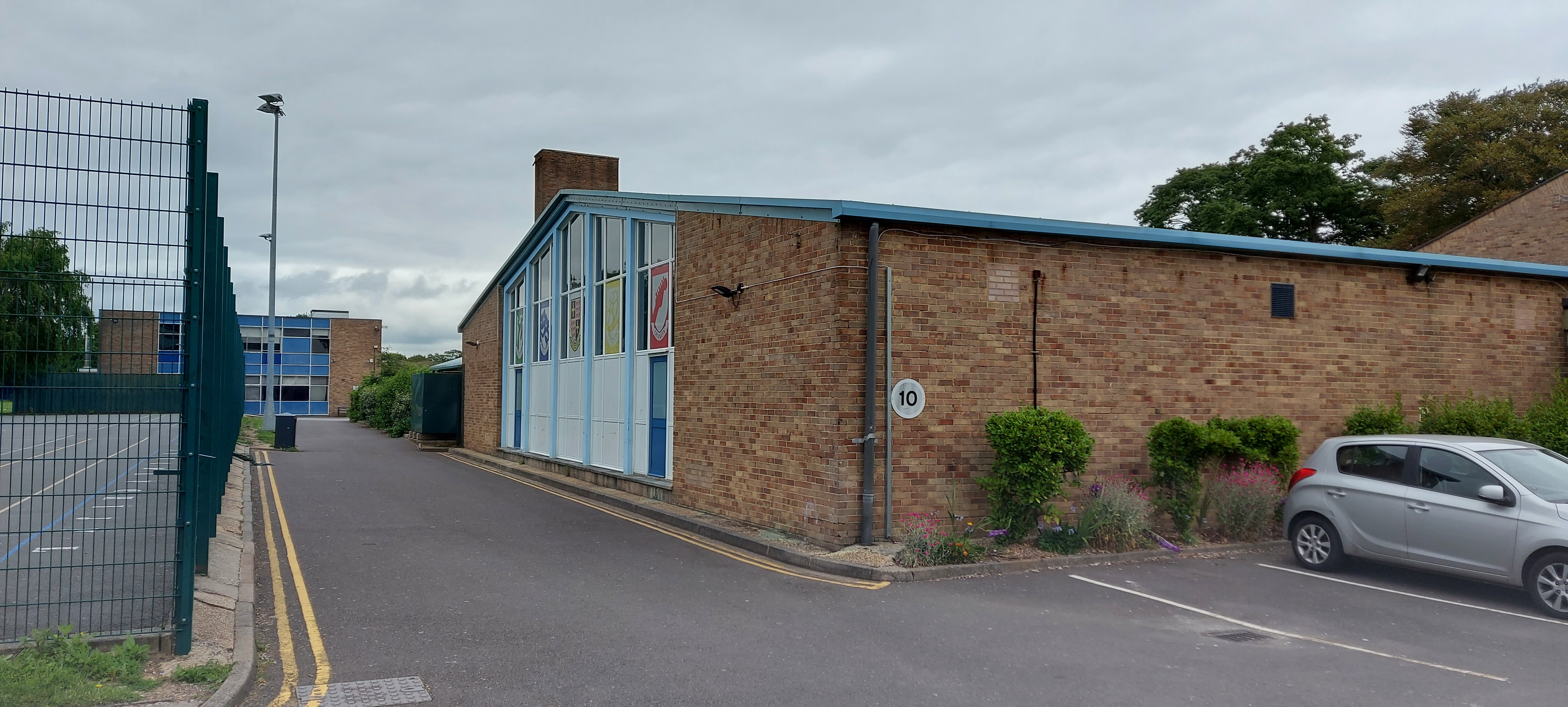
To get to the swimming pool, enter through the main gate and turn right after the island. Drive along the road, passing the large car park to your right. The side entrance to the pool is beside the gravel sports ground. See map above.
Please unload your heavy dive gear here and park your car in the main car park.
Brune Park Community School Swimming Pool
- Details
- Category: Training
Club Pool Sessions
In order to facilitate Gear testing; Ocean Diver training; Try dives and skills improvement, Southsea Sub-Aqua club has now secured a regular, monthly 2 hour session at Brune Park School in Gosport.

2nd Saturday of each month
The sessions are on the 2nd Saturday each month from 14.00 to 16.00 (Except October). Booked from October throughout the winter to May 2022.
The pool was recently refurbished; it’s lovely and warm with a maximum depth of 2.6m
Try dives will be done during the first hour, but club members will still be able to use the pool for this time. Try dives are proving very popular and we have a waiting list currently. Volunteers to help are always welcome.
Available to all club members at a cost of £9 per session. A booking-in system might be needed, just to ensure that if we get the correct number of rescue swimmers on the side.
Volunteers to act as rescue swimmers are always welcome.
Dates for your diary are:
9th October 16.00-18.00hrs
13th November, 11th December, 8th January, 12th February, 12th March, 9th April & 14th May, all 14.00 to 16.00hrs
We have also put this year's date's on the club's Google Calendar. The rest will be added later.
For directions, please see this page: Brune Park Community School Directions



